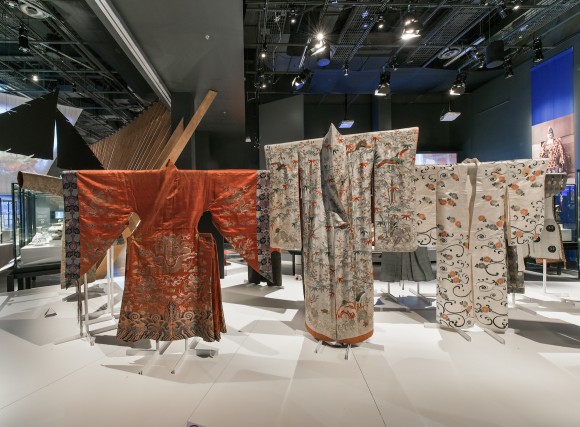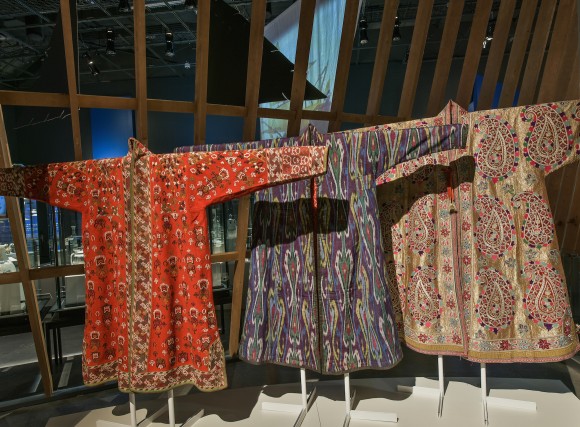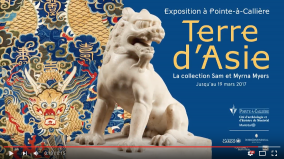Previous exhibition
November 17th, 2016 — March 19th, 2017
From the Lands of Asia
From the Lands of Asia. The Sam and Myrna Myers Collection
From November 17, 2016 to March 19, 2017
Pointe-à-Callière presents the world premiere of From the Lands of Asia. The Sam and Myrna Myers Collection. This exhibition features some 400 pieces selected from among the finest objects in a collection of 5,000 works of Asian art amassed over 50 years by an American couple living in Paris.
This collection—one of the world’s largest privately owned collections of Chinese jade and Asian objects—includes stones, icons, textiles, ceramics, ivories, porcelains, and clothing.
A unique collection
Sam and Myrna Myers acquired their first pieces in Switzerland in 1966—objects mainly from the classical age (Egypt, Greece, Rome, and the Orient). At the time, the couple was being advised by erudite and intellectual gallery owner Dr. Rosembaum, who rubbed shoulders with such renowned writers as Hermann Hesse and Thomas Mann, and pioneers of surrealism like Hans Arp and Max Ernst.
Having taken this first step, the Myers then sought to enrich their collection. Everywhere they went—both in Paris and during their travels—they frequented antique dealers, visited museums, and went to auctions. They acquired such splendid Chinese sculptures as a monumental Buddha head from the Sui dynasty (580-618) and a Guanyin bodhisattva dating to 1100-1120.
From that point on, the collectors concentrated on East Asian pieces, creating unique and coherent ensembles, particularly in jade, silk, porcelain, and other refined materials—some of which are described as having so-called magical properties.
The magic of jade
A rare and mysterious material, jade is regarded in China as the most precious of stones. Visitors are taken to the Neolithic period, where they can contemplate ceremonial weapons and insignia, and objects signifying the wearer’s social status. For example, the enigmatic bi disc may have been used as a funerary object to guide the spirit of the deceased to heaven. Or the mysterious cong cylinder, which is said to symbolize the earth and have religious and ritual significance.
Other jade pieces attract attention not only because of their beauty but also because of the special powers and magical properties the Chinese ascribe to them. For instance, ornamental pieces in the shapes of animals, including dragons – those mythical creatures that intermediate between heaven and earth. Visitors can also admire pendants and a magnificent funeral jacket made up of jade plates, a garment of immortality created during the Han dynasty (206 BCE to 220 CE).
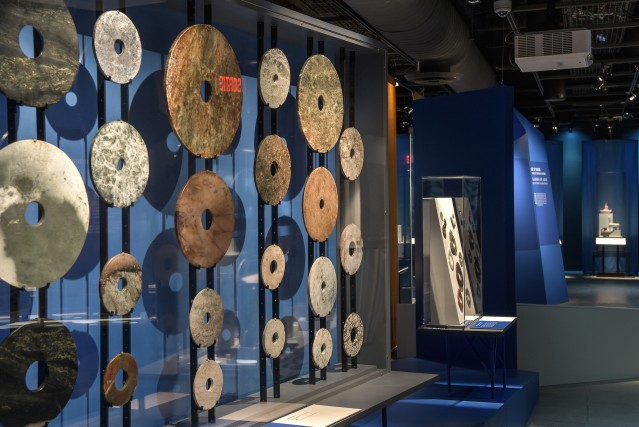
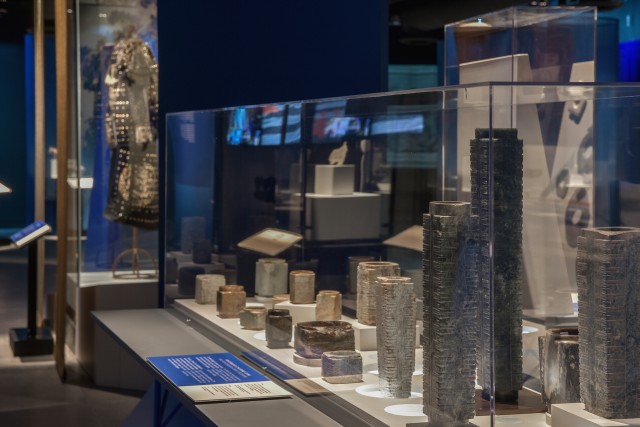
A thousand years of Buddhism
Continuing their exotic adventure, visitors travel down a cave-like tunnel, emerging into the Buddhist millennium. This part of the exhibition goes back to the origins of Buddhism in Northern India, and visitors follow the religion’s spread through China, Tibet, Korea, and Japan. Along the way, they will remark how Buddhism and Buddhist objects adapted to different local cultures and beliefs, creating a heritage of unique splendour.
Buddhas, bodhisattvas, and other divinities attest to the significance of this movement, at once a religion, a wisdom, and a philosophy. Among the key objects in this space is the marble lion, which expresses the Buddha’s teaching, likened to a roar able to awaken the world.
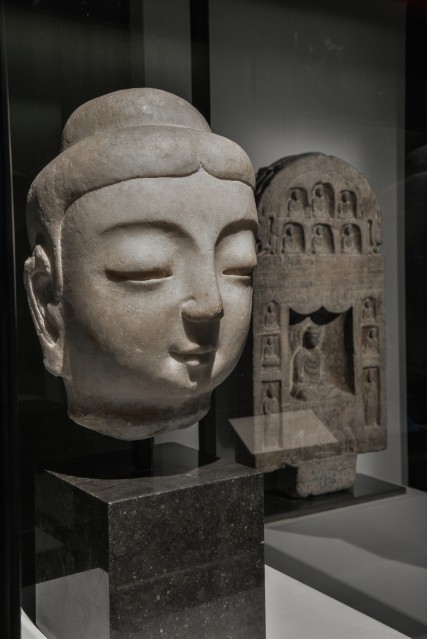
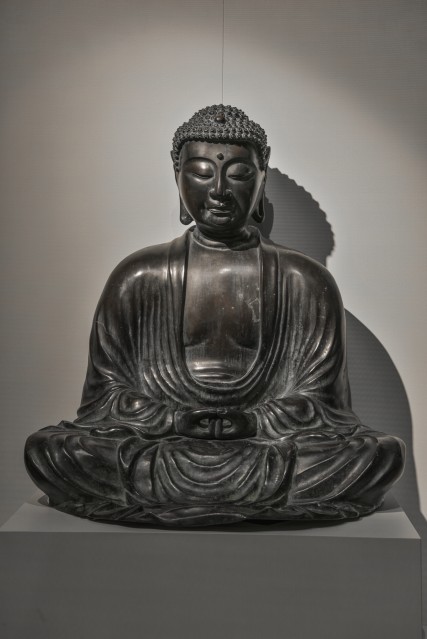
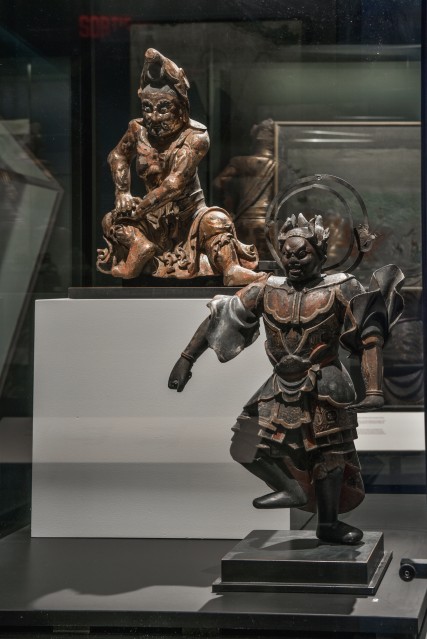
An ocean of porcelain
The exhibition next changes direction, immersing visitors in the world of porcelain. Visitors learn that by the 16th century, many Asian goods were being exported to Europe, including porcelain, which, because of its weight, could only be sent by ship. In 1530 alone, between 40,000 and 60,000 pieces arrived in Portugal. By the 17th century, the Dutch were dominating the trade, building a powerful maritime and commercial empire in the East Indies.
But as the illustrations in this section show, sea voyages could be extremely perilous. Underwater archaeological excavations have recovered numerous treasures from the wrecks of cargo ships and junks. A remarkable testament to 500 years of porcelain production, this collection displays some of the most precious of these finds, which, despite centuries at the bottom of the ocean, have lost none of their lustre.
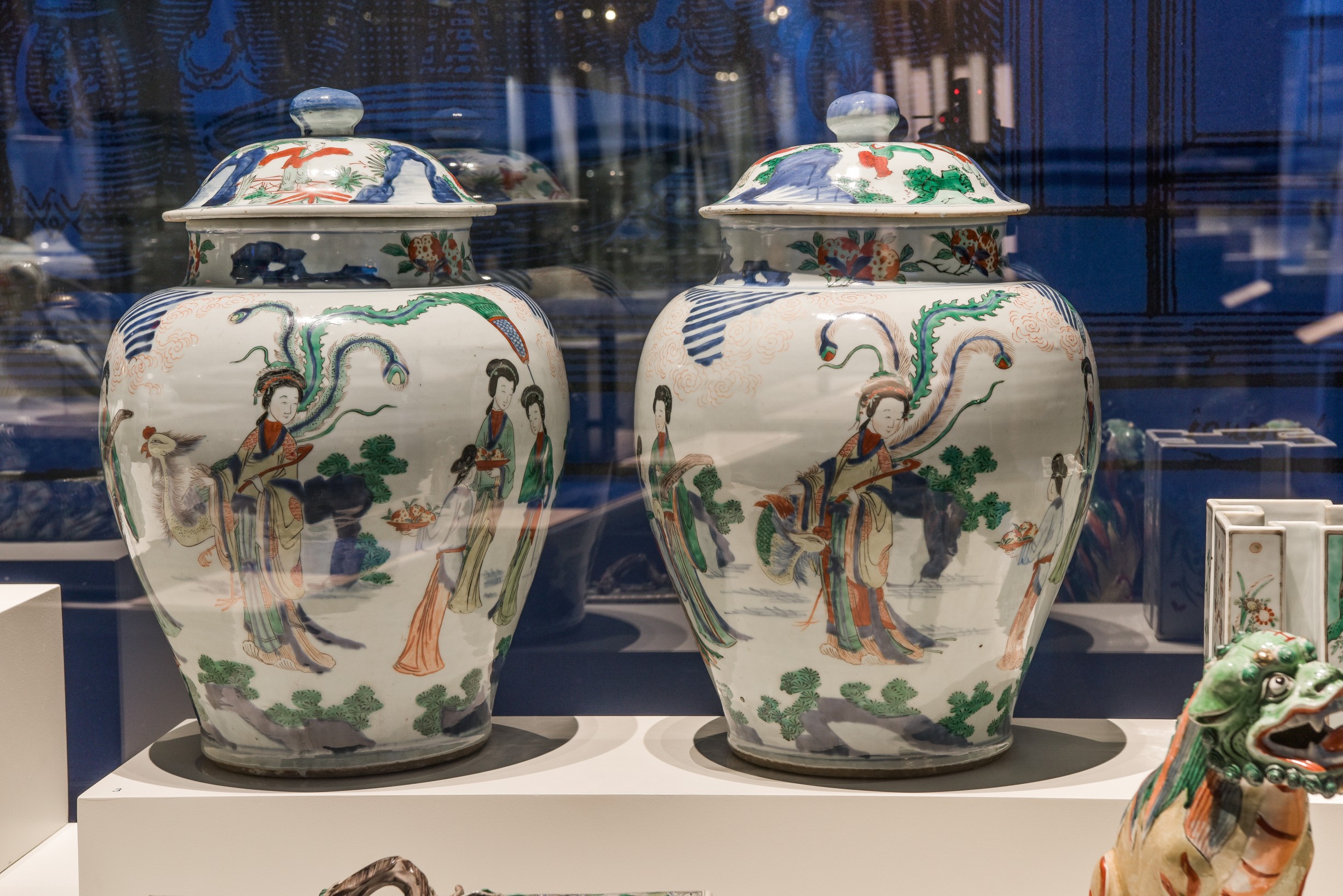
Costumes and customs
Lastly, visitors are wrapped up in the world of textiles. Costumes from the 16th to the 19th centuries in the Myers Collection prove to be an inexhaustible source of knowledge about the customs and know-how of many societies.
In China, silk fabrics reflected the wearers’ wealth and social status. At court, for example, the colour and decorations of dress changed from dynasty to dynasty. In this colourful, silk-filled space, we are introduced to key characters, including the scholar, whom we learn about through a robe – a rare complete example of a garment of this type – and through accessories such as inkstones, which these experts in writing would retain for their entire lives. From Japan, we discover the kimono, considered by some to be the most elegant garment in the world. We also cross paths with the samurai and their clothing adapted for wearing armour. Also in Japan, we learn about the Noh theatre, with its actors dressed in sumptuous silk costumes. And we imagine the lives of Uzbek merchants and riders crisscrossing the steppes, clad in flamboyantly colourful garments that take our breath away. A brilliant finale to this journey to East Asia through the works of the Sam and Myrna Myers Collection.
